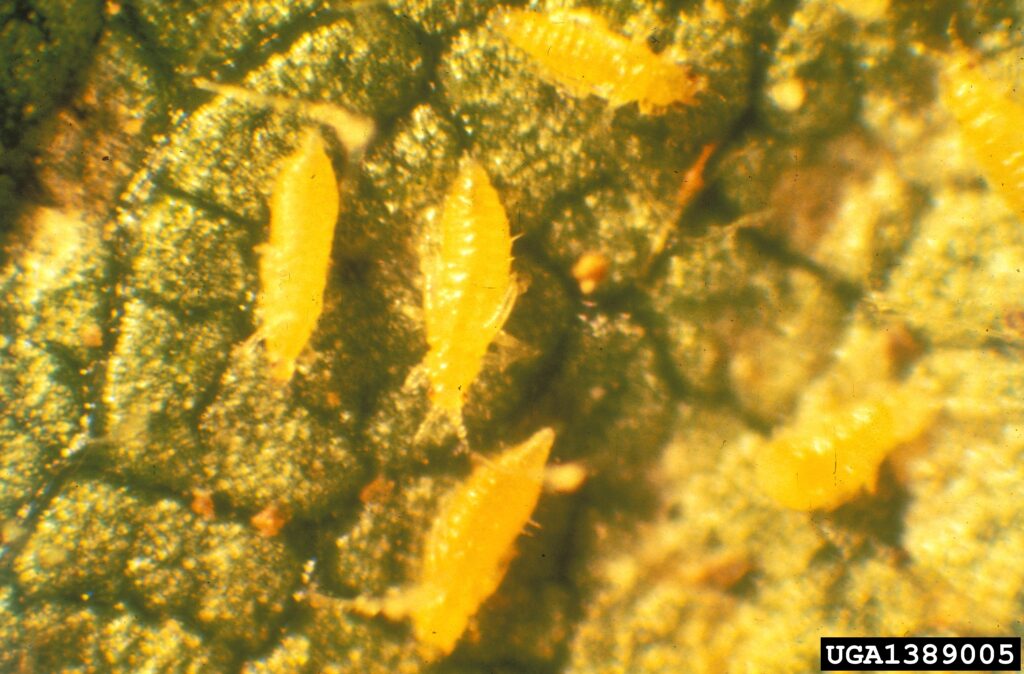A Reasonable Expectation for Acephate (Orthene) Control
go.ncsu.edu/readext?940124
en Español / em Português
El inglés es el idioma de control de esta página. En la medida en que haya algún conflicto entre la traducción al inglés y la traducción, el inglés prevalece.
Al hacer clic en el enlace de traducción se activa un servicio de traducción gratuito para convertir la página al español. Al igual que con cualquier traducción por Internet, la conversión no es sensible al contexto y puede que no traduzca el texto en su significado original. NC State Extension no garantiza la exactitud del texto traducido. Por favor, tenga en cuenta que algunas aplicaciones y/o servicios pueden no funcionar como se espera cuando se traducen.
Português
Inglês é o idioma de controle desta página. Na medida que haja algum conflito entre o texto original em Inglês e a tradução, o Inglês prevalece.
Ao clicar no link de tradução, um serviço gratuito de tradução será ativado para converter a página para o Português. Como em qualquer tradução pela internet, a conversão não é sensivel ao contexto e pode não ocorrer a tradução para o significado orginal. O serviço de Extensão da Carolina do Norte (NC State Extension) não garante a exatidão do texto traduzido. Por favor, observe que algumas funções ou serviços podem não funcionar como esperado após a tradução.
English
English is the controlling language of this page. To the extent there is any conflict between the English text and the translation, English controls.
Clicking on the translation link activates a free translation service to convert the page to Spanish. As with any Internet translation, the conversion is not context-sensitive and may not translate the text to its original meaning. NC State Extension does not guarantee the accuracy of the translated text. Please note that some applications and/or services may not function as expected when translated.
Collapse ▲We have been fielding many calls from folks rightly worried about acephate (Orthene) control. Growers are finding thrips behind acephate sprays wondering if they their spray is working. This is driven by our recent finding in one location in the northeastern part of the state where tobacco thrips were shown to be resistant to acephate.
Although checking behind sprays is something we always recommend, checks behind a spray are most informative when paired with a check before the spray. In our replicated trials, we don’t have any insecticides that are 100% effective. For example, in a trial at the Tidewater Research Station in Plymouth last year, thrips numbers averaged 47 per plant with a Gaucho-alone seed treatment, 17 per plant behind a spray of acephate, and 13 per plant with AgLogic at planting at the two leaf stage. Although not 100% effective, foliar sprays often provide the plant a critical relief from thrips pressure at a time period where seed treatment efficacy is waning.
Furthermore, although tobacco thrips tend to be more common, thrips species are variable across fields and the growing season. Western flower thrips are very difficult to kill with acephate. Hence, thrips found behind a spray might be Western flower thrips, rather than tobacco thrips. Furthermore, species are difficult to identify without slide mounting and looking for characteristics like body hair length and antennal structures or with molecular techniques.
Additionally, thrips adults can move in behind a spray. Most of our foliar products have little residual and the presence of adults should not be used as an indication of spray efficacy. Focus scouting attention on immature thrips. They are small, cream colored, sausage-shaped, and lacked wings. You can pull up seedlings and rap them into a cup, or onto a sheet of paper. I often look for movement to help me key in on the thrips, but it pays to have sharp eyesight. One consultant recently reported that these larvae are easiest to see against a black sheet of paper. Also note that samples taken after a rain will give artificially low numbers.
Finally, focus on the growth of the newest leaf. Insecticide sprays take time to work and won’t reverse previous injury. New leaves behind a successful spray should be shiny, green, and not misshapen.



